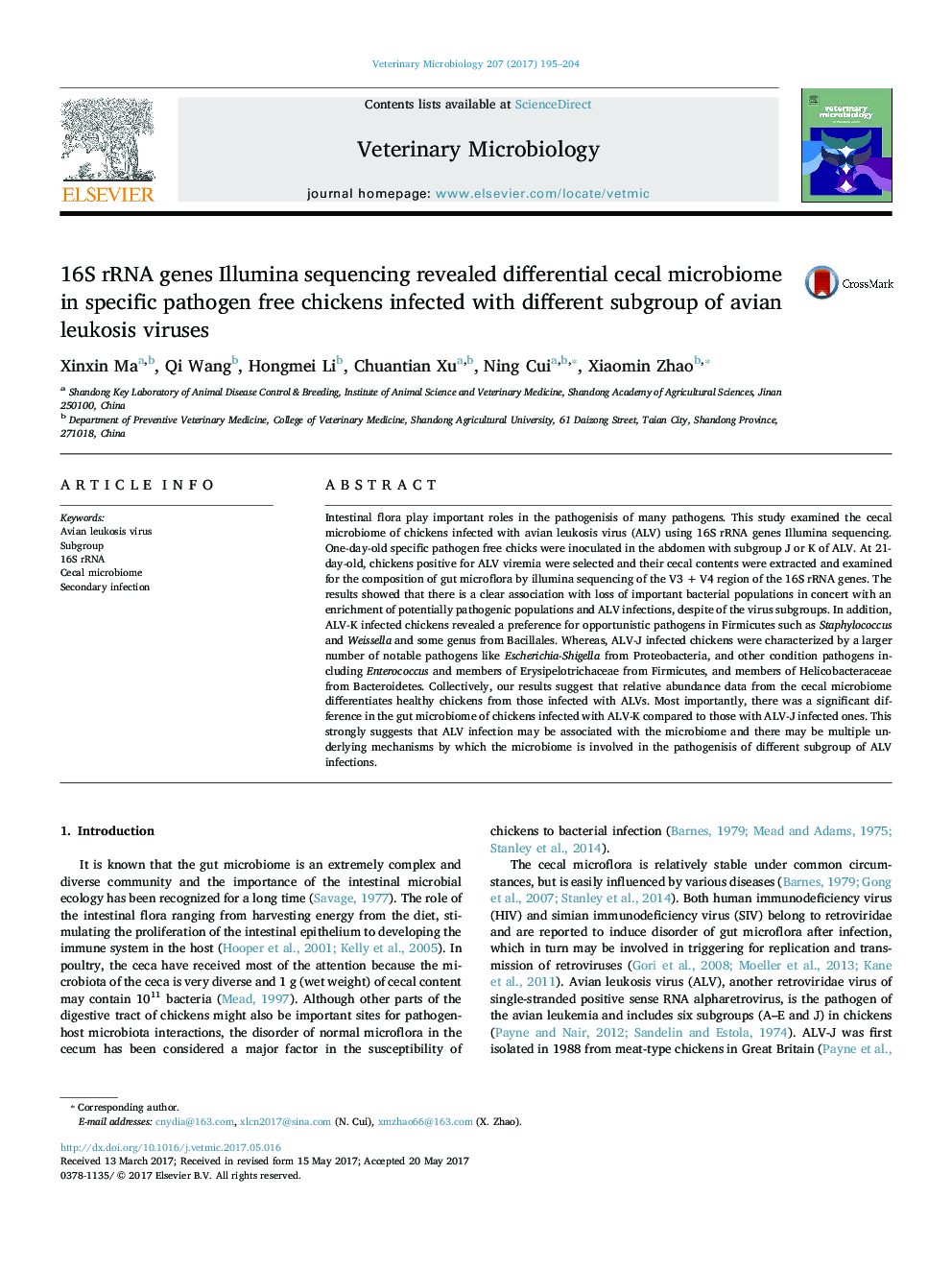| Article ID | Journal | Published Year | Pages | File Type |
|---|---|---|---|---|
| 5545229 | Veterinary Microbiology | 2017 | 10 Pages |
•ALV infection is associated with an increase in microbial richness and diversity in the chicken ceca.•ALV infections led to high frequencies of disease-associated bacteria within the gut.•ALV-K caused greater influence on gut microbiota composition than ALV-J.
Intestinal flora play important roles in the pathogenisis of many pathogens. This study examined the cecal microbiome of chickens infected with avian leukosis virus (ALV) using 16S rRNA genes Illumina sequencing. One-day-old specific pathogen free chicks were inoculated in the abdomen with subgroup J or K of ALV. At 21-day-old, chickens positive for ALV viremia were selected and their cecal contents were extracted and examined for the composition of gut microflora by illumina sequencing of the V3 + V4 region of the 16S rRNA genes. The results showed that there is a clear association with loss of important bacterial populations in concert with an enrichment of potentially pathogenic populations and ALV infections, despite of the virus subgroups. In addition, ALV-K infected chickens revealed a preference for opportunistic pathogens in Firmicutes such as Staphylococcus and Weissella and some genus from Bacillales. Whereas, ALV-J infected chickens were characterized by a larger number of notable pathogens like Escherichia-Shigella from Proteobacteria, and other condition pathogens including Enterococcus and members of Erysipelotrichaceae from Firmicutes, and members of Helicobacteraceae from Bacteroidetes. Collectively, our results suggest that relative abundance data from the cecal microbiome differentiates healthy chickens from those infected with ALVs. Most importantly, there was a significant difference in the gut microbiome of chickens infected with ALV-K compared to those with ALV-J infected ones. This strongly suggests that ALV infection may be associated with the microbiome and there may be multiple underlying mechanisms by which the microbiome is involved in the pathogenisis of different subgroup of ALV infections.
